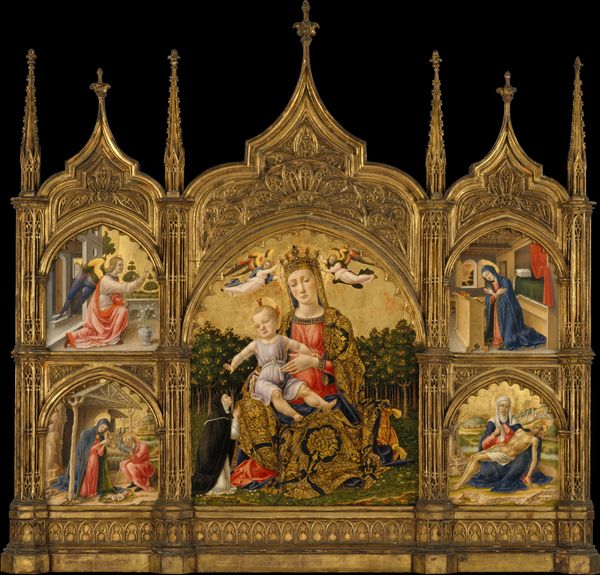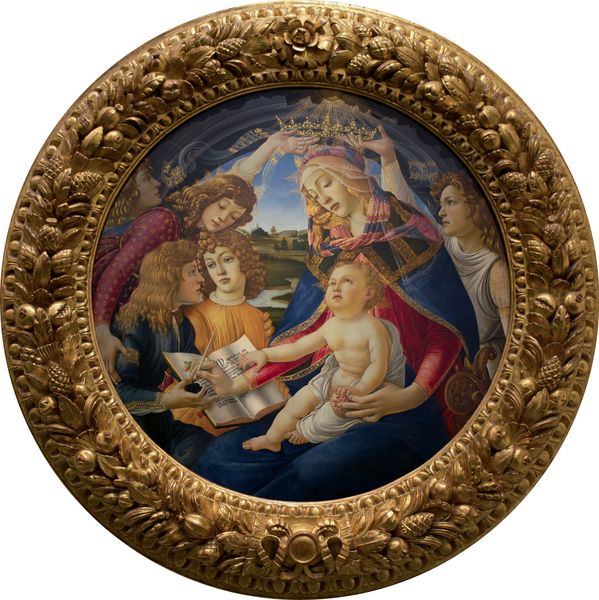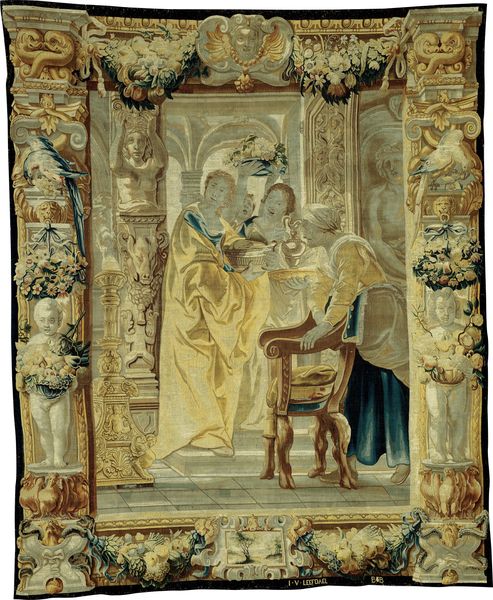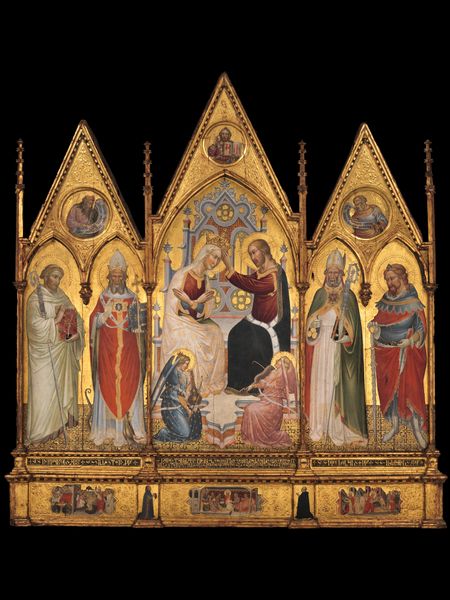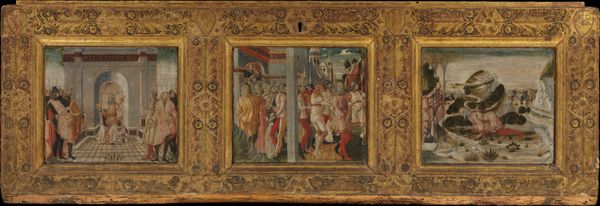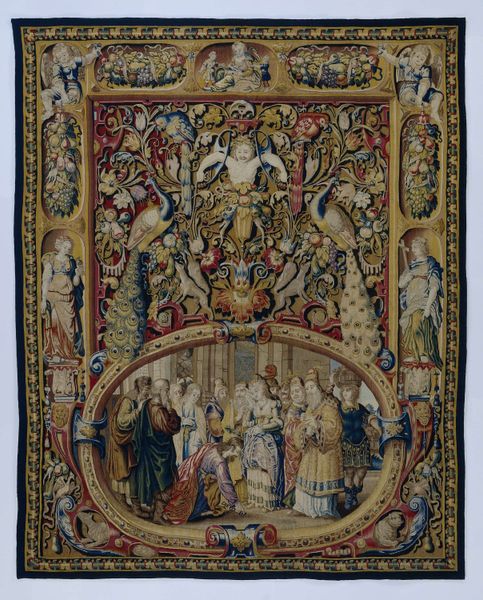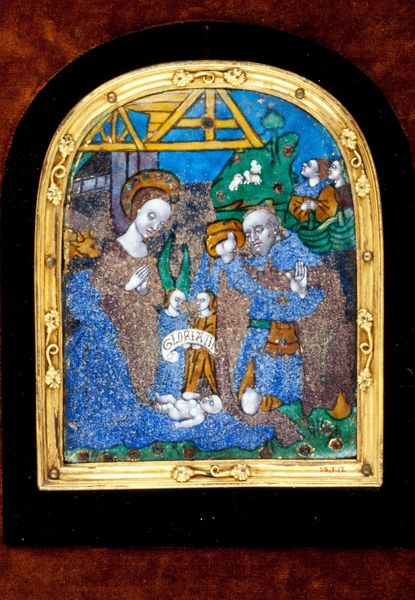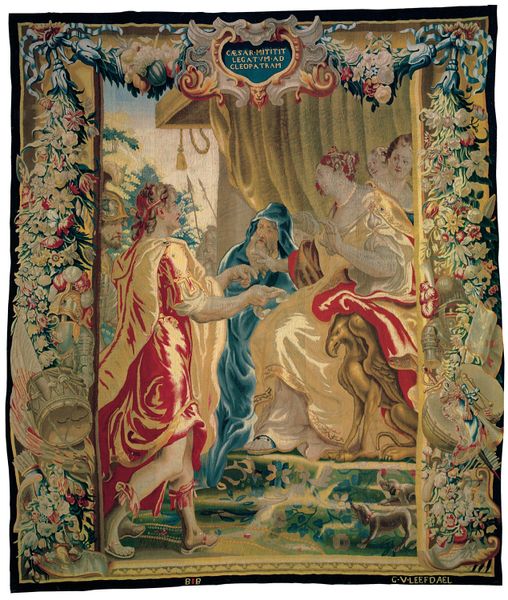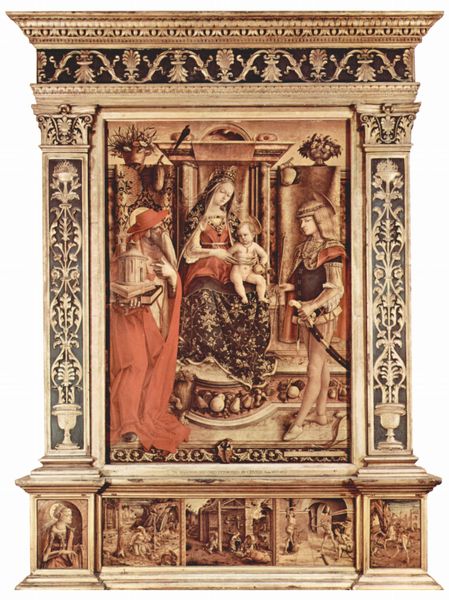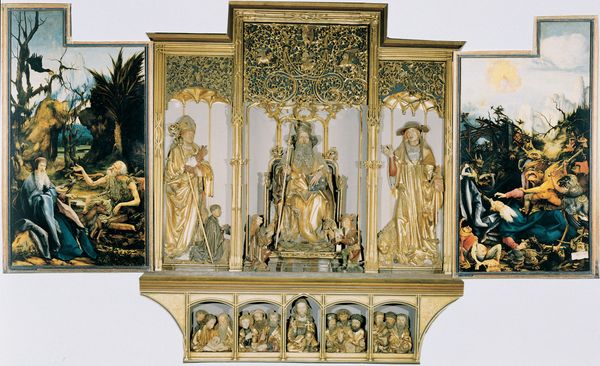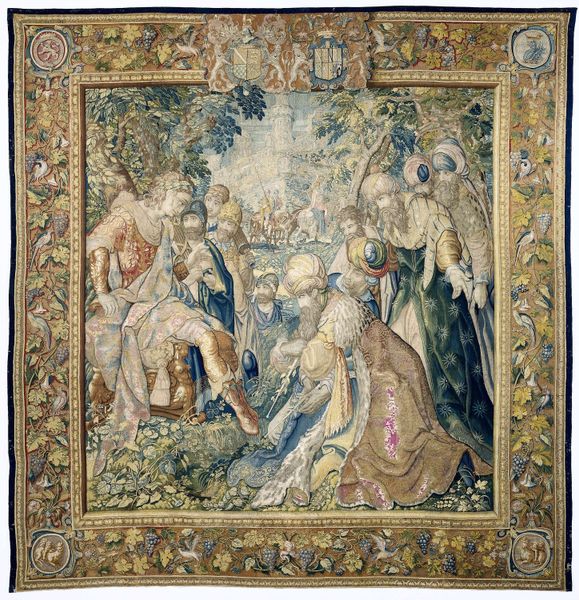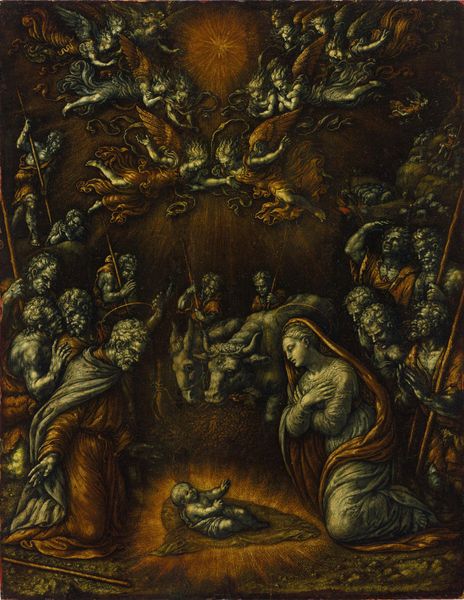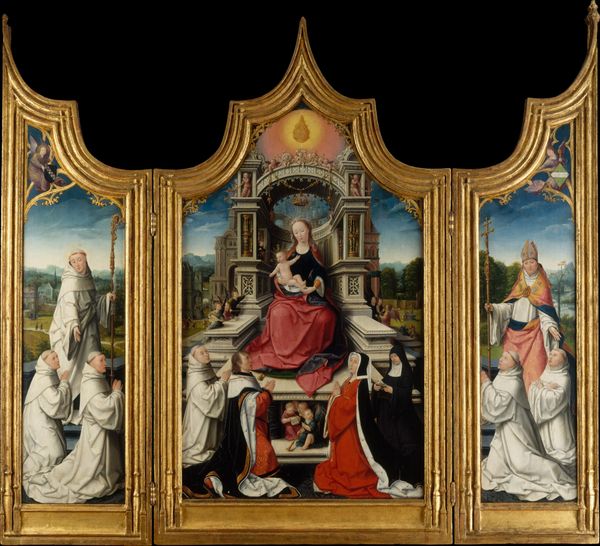
tempera, painting
#
portrait
#
medieval
#
tempera
#
painting
#
sculpture
#
stain glass
#
tile art
#
international-gothic
#
decorative-art
#
decorative art
#
miniature
#
gothic
Dimensions: 8 9/16 x 13 3/8 in. (21.75 x 33.97 cm) (sight)
Copyright: Public Domain
The *Triptych with the Madonna and Child* was crafted by Pierre Reymond, a master of enamel painting, sometime in the 16th century. Religious art during this period reinforced the power and teachings of the Church, but it also served as a potent means of expressing personal and communal identity. At first glance, we see the traditional iconography of the Madonna and Child, flanked by saints and prophets, but notice how Reymond subtly weaves in markers of social status. The clothing, the heraldic symbols, and the very act of commissioning such a luxurious item speaks to the patron’s wealth and position. The Triptych doesn't just represent biblical figures; it reflects the lived reality of its commissioner. It invites us to think about the complex interplay of faith, power, and identity during the Renaissance. What did it mean to express piety and devotion while simultaneously signaling one's place in the social hierarchy? How might such objects have shaped the identities and self-perceptions of those who engaged with them?
